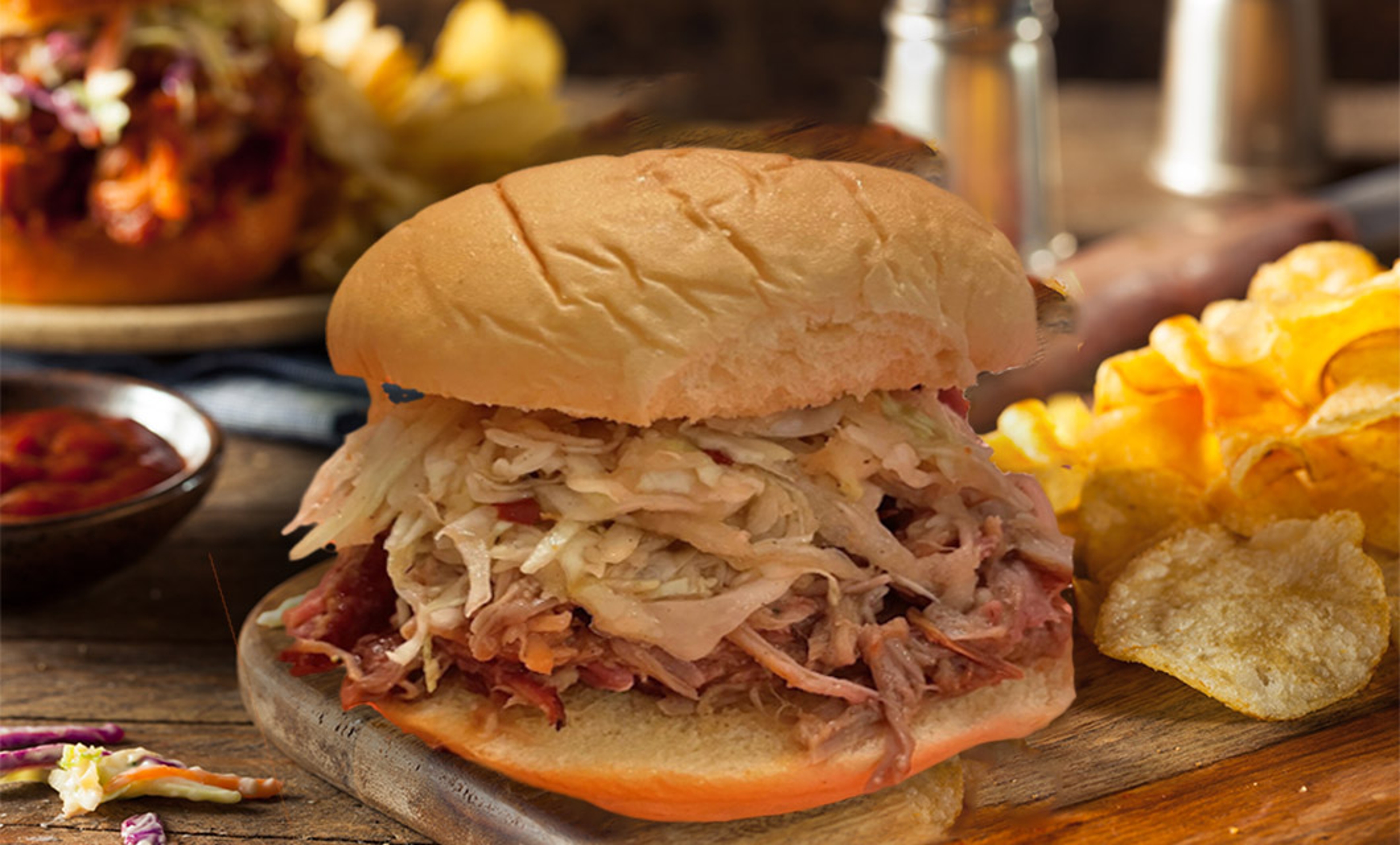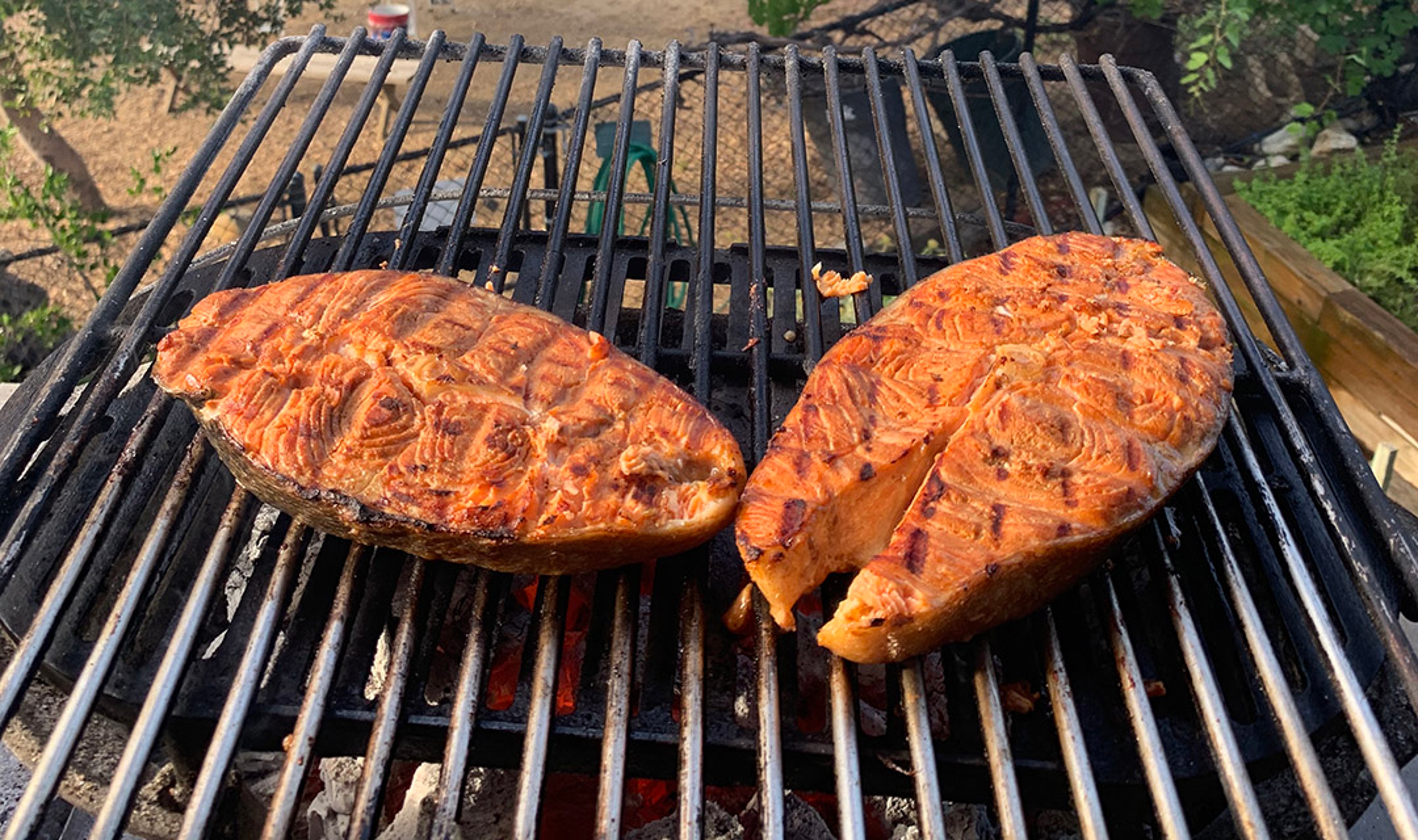How to Make a Better Salad
It's about time the salad gets the respect it deserves.
Aug 06, 2022
When you hear the word “salad," do you think of light lunch fare, dieting, or restrictive eating? If you do, it's time to rewire your thinking.
A salad does not have to be a pile of lettuce with some bland store-bought dressing and a few cherry tomatoes. A salad can be an entire meal, and feature the best of seasonal eating in a bowl.
I have worked with several clients to develop salads, and the exercise is the same as the approach to take at home. When constructing a salad, consider the following:
- Think about all the elements ahead of time and give yourself some options as you create.
- Ingredients can be cooked, raw, or pickled.
- Think about dressing options (creamy, vinegar based, spicy, etc.).
- If you want to make it a meal, add an element of protein, bread, and textures.
- A salad can be served as individual or family-style platters, usually at room temperature or chilled.
There are six main salad components. They are:
- Base
- Bulk items (vegetables)
- Texture
- Fruit/sweet element
- Proteins
- Dressings
Base
Base
The base is traditionally the greens, but it can also be grains, potatoes, or even roasted vegetables. Think about the base as the backdrop for the flavor combination and textures you want to highlight. Some of my favorite combos are 1) shredded kale and cabbage 2) arugula and herb mixture 3) farro and raw vegetable mix 4) cooked quinoa 5) endive and bibb lettuce leaves 6) grilled romaine hearts You want the base to be about half the volume of your salad, or more if you want.
Know your lettuces
Know your lettuces
Bibb (or Boston): buttery soft texture, great for vinaigrettes, goes well with seafood
Romaine: hearty and crunchy, good grilled and with hearty, creamy dressings
Kale: use baby kale or cut larger kale leaves into strips, good with any dressing and in coleslaws
Arugula: peppery tender leaf, good with other salads
Vegetables
Vegetables
Vegetables in salads can be added raw, roasted, pickled, or grilled. Depending on the composition of the salad, they bring texture, deep flavor, and bulk to the salad without being too heavy. I love the idea of adding both raw and cooked vegetables, such as beets, radishes, and asparagus, as you get the full spectrum of flavor that the vegetables offer. Think about some grilled asparagus and shaved raw asparagus with frisée lettuce and a sharp lemon or balsamic vinaigrette, along with some aged goat's milk cheese or ricotta salata cheese.
Texture
Texture
Texture is what makes salads interesting, and this is where you can use ingredients that veer off the theme of the salad. Textural components are everything from toasted nuts (think smoked almonds) to seeds (like pumpkin or sunflower) to croutons, puffed rice, and roasted chickpeas. Any of these things add texture — and crunch. Bread is another way to incorporate texture, and it can mean anything, too, from croutons to grilled naan to a griddled cheese sandwich.
Fruit/Sweet
Fruit/Sweet
Whether fresh or dried, fruit adds a natural sweetness to salads. Dried cranberries, raisins, dates, and figs all work well, and are even better when soaked in vinegar before putting them into your salad. Fresh fruits like pears, peaches, and apples are great for sweetness, texture, and acidity. If you grill the fruits, be sure to achieve a char; grilled fruits pair especially well with Rogue Creamery blue cheeses. In the fall, I like to roast grapes (this concentrates the sweetness) and add them to a salad with roasted cauliflower, bitter greens, and some aged cheese.
Proteins
Proteins
No proteins are off limits when it comes to salads — that includes using leftovers; just think through the base you are using to support the protein both in structure and flavor. Grilled chicken, fish, and shrimp all work nicely with hearty greens and grains. Poached salmon and shrimp go well on butter lettuce, and with avocado and spring vegetables. Barbecue tofu or meats are great when shredded over kale mixes with a goddess-type dressing. Eggs in any form are a great salad topping: poached on the classic salade Lyonnaise, fried on a bowl of grains seasoned with kimchi, or hard-boiled on a Cobb or Niçoise salad.
Dressing
Dressing
Dressing is what brings a salad together, and can make or break the dish. You want to lightly dress salads, not drown them in dressing. If you love dressing and need more, simply put some on the side. Remember to always season both your dressing and your salad to make sure the seasoning is well distributed.
I break dressings down into five categories:
- Creamy and mild (Caesar, ranch, goddess)
- Creamy and spicy (sriracha ranch, chipotle Caesar, kimchi)
- Classic vinaigrette (lemon vinaigrette, mustard vinaigrette)
- Herbaceous (chimichurri, pesto)
- Chunky (remoulade, caramelized
How to make 4 seasonal salads
Summer | Watermelon, feta, and mint
Summer | Watermelon, feta, and mint
This is a light and refreshing salad that's best when watermelons are at their sweet peak. You can shave fennel or celery hearts and mix them with spicy arugula leaves and toss lightly with olive oil. Place chunks of watermelon over the salad, then add cubes of fresh feta. Grind some black pepper on top and use a dressing with some acidity to brighten the sweet watermelon. Finish with torn mint leaves.
Fall | Shaved fennel, poached pear, candied pecans, cheddar, torn croutons
Fall | Shaved fennel, poached pear, candied pecans, cheddar, torn croutons
Mix thinly shaved fennel with greens like escarole or mizuna lettuce, and then toss with the croutons and slices of poached pear. (Poach the pear in lightly sweetened Riesling with some cloves or a cinnamon stick.) Top with candied pecans and pieces of cheddar cheese (preferably aged). Make a dressing with sherry vinegar, olive oil, mustard, and a pomegranate molasses.
Winter | Roasted beets and kale salad with spiced pumpkin seeds, blue cheese, and maple vinaigrette
Winter | Roasted beets and kale salad with spiced pumpkin seeds, blue cheese, and maple vinaigrette
Make the maple vinaigrette with maple syrup, part sherry and part red wine vinegar, olive oil, cracked pepper, and shallots. Mix the torn kale or baby kale with sliced raw cabbages and the vinaigrette. Toast the seeds with salt and pepper and use as a garnish with pieces of blue cheese, shaved radishes, and a drizzle of the vinaigrette.
Note: smoked bacon is not bad either on this salad.
Spring | Bibb lettuce, grilled and shaved asparagus, poached egg and crispy focaccia, Dijon-sherry vinaigrette
Spring | Bibb lettuce, grilled and shaved asparagus, poached egg and crispy focaccia, Dijon-sherry vinaigrette
Bibb lettuce leaves are tender and buttery, tossed here with shaved raw asparagus and a classic Dijon vinaigrette. The whole asparagus is lightly grilled or roasted and arranged around the base of the salad. The pièce de résistance is the warm poached egg that creates a second dressing for the salad. Some lightly toasted pieces of focaccia bread finish the salad and soak up the egg yolk.
.svg?q=70&width=384&auto=webp)


















